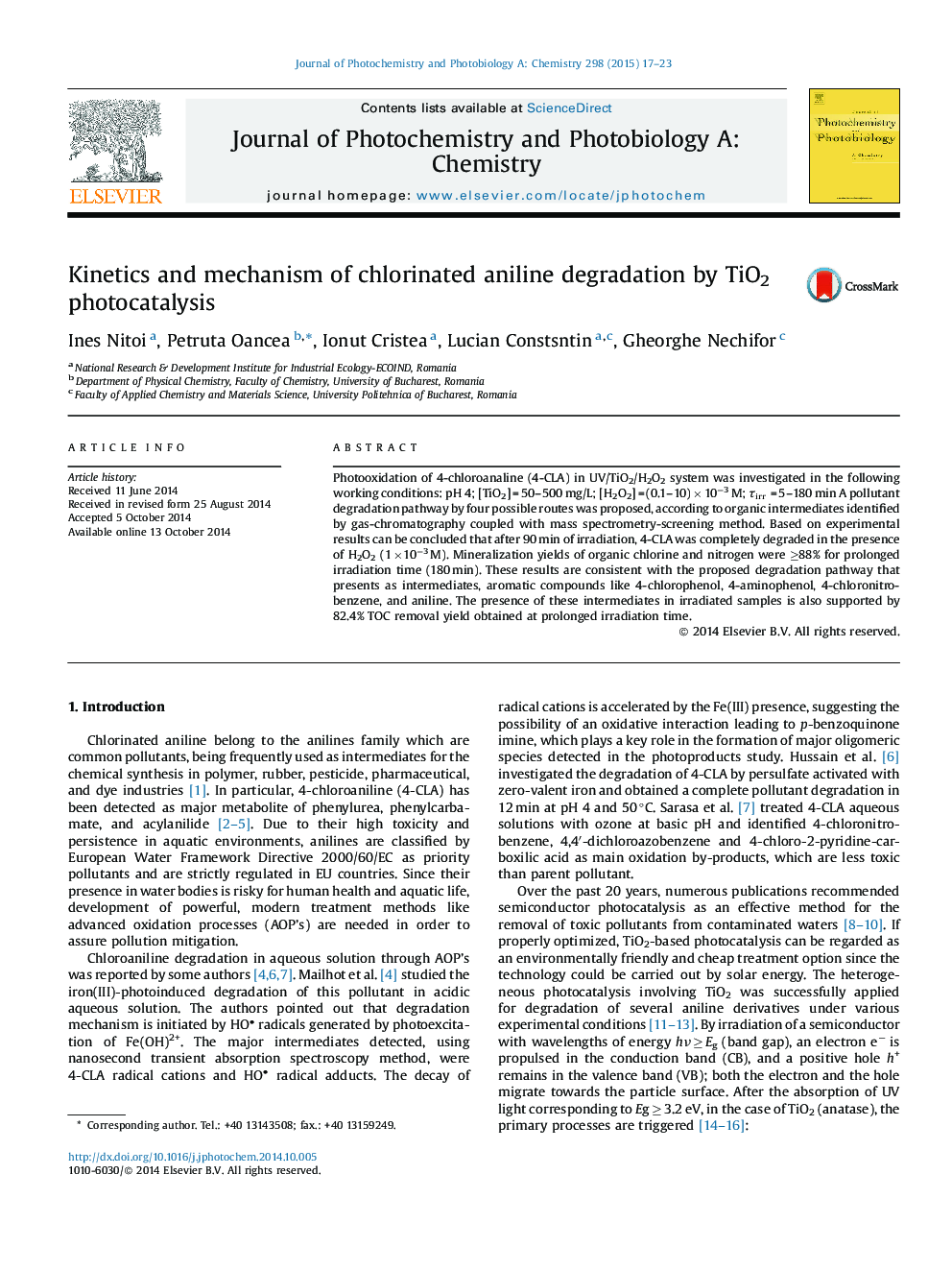| کد مقاله | کد نشریه | سال انتشار | مقاله انگلیسی | نسخه تمام متن |
|---|---|---|---|---|
| 25868 | 43900 | 2015 | 7 صفحه PDF | دانلود رایگان |

• Photooxidation of 4-chloroanaline (4-CLA) in UV/TiO2/H2O2 system was investigated.
• 90 min irradiation and H2O2 = 1 × 10−3 M assures 99.3% 4-CLA degradation.
• Some of aromatic intermediates have been detected by GC–MS screening method.
• The degradation is mainly initiated by OH radicals attack on 4-CLA.
• 4-CLA degradation mechanism including four possible routes was proposed.
Photooxidation of 4-chloroanaline (4-CLA) in UV/TiO2/H2O2 system was investigated in the following working conditions: pH 4; [TiO2] = 50–500 mg/L; [H2O2] = (0.1–10) × 10−3 M; τirr = 5–180 min A pollutant degradation pathway by four possible routes was proposed, according to organic intermediates identified by gas-chromatography coupled with mass spectrometry-screening method. Based on experimental results can be concluded that after 90 min of irradiation, 4-CLA was completely degraded in the presence of H2O2 (1 × 10−3 M). Mineralization yields of organic chlorine and nitrogen were ≥88% for prolonged irradiation time (180 min). These results are consistent with the proposed degradation pathway that presents as intermediates, aromatic compounds like 4-chlorophenol, 4-aminophenol, 4-chloronitrobenzene, and aniline. The presence of these intermediates in irradiated samples is also supported by 82.4% TOC removal yield obtained at prolonged irradiation time.
Journal: Journal of Photochemistry and Photobiology A: Chemistry - Volume 298, 1 February 2015, Pages 17–23